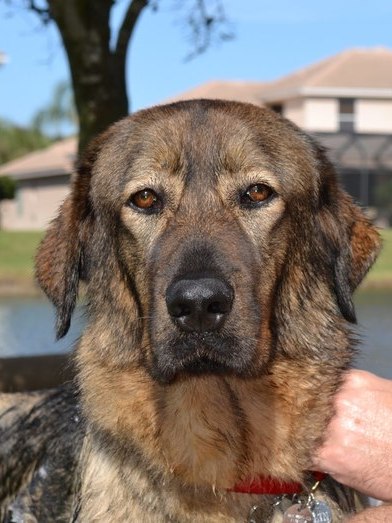I was in South Africa on a DevOps tour with Kurt Bittner from Forrester, meeting with CIOs and IT leaders to talk about their journey to increasing velocity and quality with DevOps. Between customer meetings, we explored and were amazed at the diversity of the wildlife we saw. Lions, elephants, rhinos, and so much more. Amid the awesome wildlife backdrop, we pondered the wildlife that is found in the land of DevOps. Here's a short field guide to what you'll find when you begin your journey into the wild.
Cats

Family: Felis catus DevOpsious
Description: Cats are agile, nimble, and often used to represent the dev and agile elements of "DevOps" in various DevOps presentations and discussions. The DevOps cat is like the developer who typically explores cool new technology and discovers new, novel solutions to challenges. Unlike the reputation our domestic kitties have earned, however, the DevOps cat isn't aloof, but capable of deep empathy for the team and its shared goals.
Habitat: It's most commonly found on agile teams, where short development iterations are focused on business innovation. Large monitors, energy drinks, pizza boxes, and stickers are telltale signs of the DevOps cat habitat. The work of cats can often be found online as well, on sites such as GitHub, StackExchange, and others.
Range: Historically, true DevOps cats were limited to startup and webscale ecosystems; however, the DevOps cat is rapidly migrating into traditional, large enterprise organizations.
Dogs

Family: Canis lupus familiaris DevOpsious
Description: Dogs often represent the ops part of DevOps. Protective and loyal, the dog typically has a checkered relationship with cats, with numerous examples of cats traumatized and treed by dog policies, processes, and procedures. The DevOps dogs, however, are the exception, sharing and partnering with the DevOps cats in a team—clearly not your typical cat-dog relationship. Cats and dogs together = DevOps
Habitat: Typical DevOps dogs are found in and near data centers, network operating centers, and server farms, often occupying change advisory boards to protect production from rogue changes from uncontrolled cats. The DevOps dogs, however, are found in similar habitats as the DevOps cats.
Range: The traditional "ops" dog is found in both small and large IT organizations. It often wears an ITIL v3 tag on a tracking collar to indicate allegiance to exact processes and procedures. Rarely are cats found in the proximity of the dog, however, the emergence of the DevOps dog is leading to packs of DevOps cats and dogs being discovered in many large enterprises.
Unicorns
Family: Billionarius maximus
Description: These rare, elegant, and fantastic creatures represent the rare companies where DevOps practices and concepts originated. They're typically new webscale companies with limited legacy systems and technical debt who provide fertile ground for dev and ops teams to innovate together. The likes of Amazon, Etsy, Google, Flikr, and others are often considered Unicorns.
Habitat: Frequently found in Silicon Valley garages, unicorns are also found in startup incubators and accelerators.
Range: The largest population of unicorns in the wild are found in Silicon Valley. However, in recent years, as the cloud has become ubiquitous, unicorns have been sighted in a number of large cities where technical and business innovation is flourishing.
Mules, donkeys, horses
Family: Equidae
Description: In DevOps discussions, horses, donkeys, and mules represent the companies and enterprises where the idea of DevOps is interesting but probably not possible. These companies incorrectly assume that DevOps is only possible with rare and mythical unicorns. In a similar pattern, as the unicorns have expanded their range, so too have we seen DevOps practices emerge into more traditional "horses." Many of these horses gather at the DevOps Enterprise summit and can be quantified in reports about DevOps adoption.
Habitat: Office buildings and enterprise campuses
Range: Worldwide
Rubber chickens
Family: Phasianidae Plasticous
Description: Rubber chickens can play a role in the early adoption of the DevOps practices of continuous integration. In a 2006 blog post, James Shore documented the details of how a rubber chicken and a desk bell could be used to help a team of developers adopt continuous integration practices.
Habitat: Developer teams and work areas, usually resting on or near the team's build machine.
Range: Worldwide
Related animals
Here are a few other related animals that might be spotted when exploring the untamed DevOps wilderness.
Pigs & chickens
When agile teams talk about commitment to the project, there's often the analogy of which animal is more committed to a bacon and eggs breakfast: the chicken who just laid an egg or the pig?
Whales
Containers and managing and scaling infrastructure as code is a key concept common in DevOps. You should expect to encounter the Docker whale.
Bugs
There are a wide range of bugs found in software development. From the first moth that shorted out the Mark II computer at Harvard University in 1947 to the challenges we face in today's microservices and big data systems, bugs and defects are often what make software development interesting and challenging. However, in a DevOps world, the population of bugs and defects will shrink, as teams deliver higher quality code with better test coverage.
The menagerie
As you begin your exploration into the world of DevOps, you'll certainly encounter and interact with a variety of wildlife, including, no doubt, more than I've listed here. You can expect to discover how the teams operate differently from traditional silos, how their shared focus is on the full delivery chain, and how that focus enables them to run faster and increase quality.
Exciting times await you.
Keep learning
Take a deep dive into the state of quality with TechBeacon's Guide. Plus: Download the free World Quality Report 2022-23.
Put performance engineering into practice with these top 10 performance engineering techniques that work.
Find to tools you need with TechBeacon's Buyer's Guide for Selecting Software Test Automation Tools.
Discover best practices for reducing software defects with TechBeacon's Guide.
- Take your testing career to the next level. TechBeacon's Careers Topic Center provides expert advice to prepare you for your next move.


